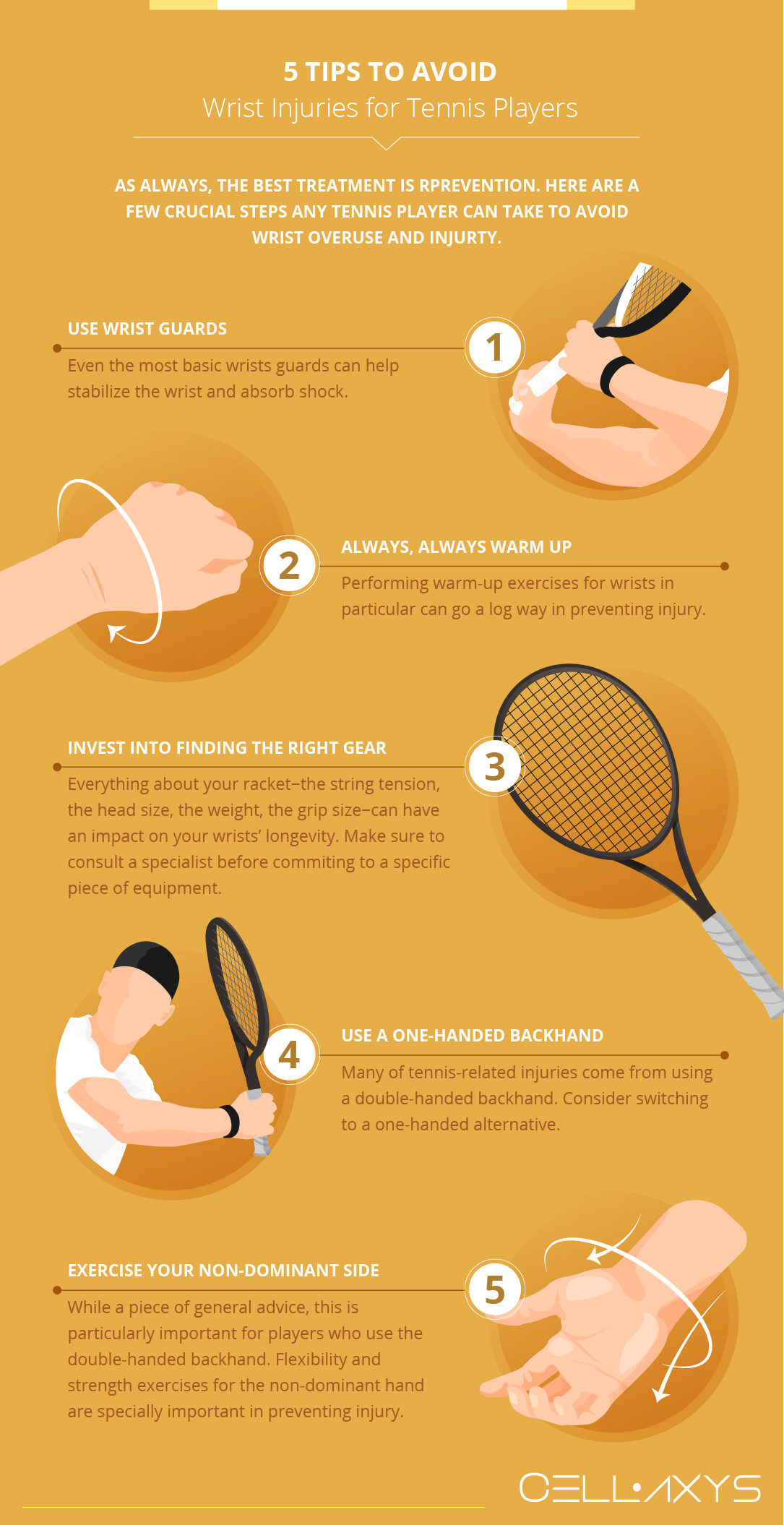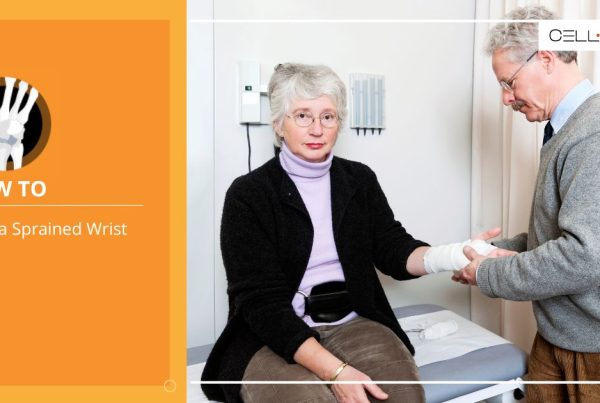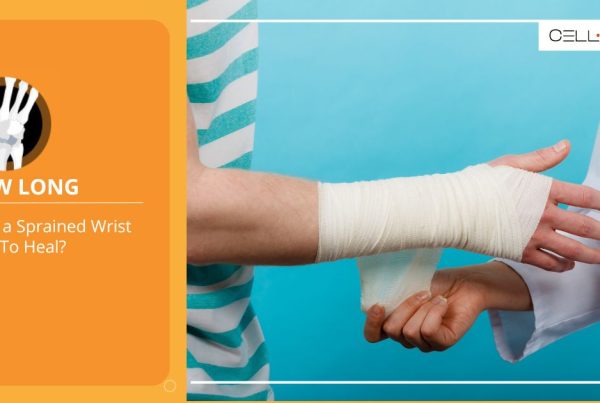Published on: June 20, 2019 | Updated on: August 29, 2024
For tennis players, wrist pain is no news. Wrist injuries have haunted even the most talented athletes, often limiting their career achievements. If addressed in time, however, most wrist injuries can be treated without surgery.
Do you have wrist pain?
Fill out the form below to schedule your FREE virtual consultation
Statistically, wrist injuries in tennis—whether caused by a traumatic experience or simply wrist overuse—are a part of players’ everyday life.
According to a 2012 study of injuries in Wimbledon, almost 21 wrist injuries occurred per 1000 sets played. Assuming the average of 4 sets per match, a player is statistically likely to encounter an injury every 12 matches. The study concludes that while men are more likely to encounter an injury in the lower part of the body (hip, groin, ankle), female players suffer from upper-body problems (such as wrist injuries) more often.
Another review studied injuries in the U.S. Open from 1994 to 2009. While the overall numbers were found to be lower among players (roughly 24 injuries per 1000 matches played per player), wrist injuries turned out to be the 2nd most common injury type.
All data points to the fact that tennis is particularly stressful for the wrists. Why is that?
Why Does Tennis Cause Wrist Damage?
Back in the era of wooden rackets, hitting a tennis ball was hardly more stressful on the wrist than striking a badminton shuttlecock. Tennis players would often hit the ball with the racket in a vertical position, which alone indicates the level of force put into the motion.
In comparison, 120 mph was a record-worthy serve speed back in 1932. Today, the fastest serve record belongs to Sam Groth, who smashed an astounding 163.7 mph ace back in 2012.
The weight of the rackets used by professionals and amateurs has increased significantly, too. Most wooden rackets fall into the range of 90-200 grams. Even junior-oriented composite rackets used today weigh at least 250 grams, with equipment designed for professionals often exceeding the 300-gram mark.
Over time, these weight differences add up. After hitting tens of thousands of ball strokes, even the slightest changes in the racket weight and hitting force translate into a radical increase in wrist wear-and-tear.
Naturally, new composite rackets are designed to absorb the shock that occurs upon contact. From string tension to the materials the frame is made of, modern rackets are built in a way to offset the largely increased hitting power.
However, shock is best absorbed when the ball is hit with the racket’s sweet spot—usually the point in the middle of the racket head. When the stoke misses the sweet spot, the shock is considerably greater—which translates into stress onto the wrist.
Not hitting the ball with the center of the racket also causes the racket to spin. This introduces additional stress in the arm.
For amateur players, consistently finding the racket’s sweet spot is often a challenging task, which means that wrist problems manifest after fewer matches, compared to professional players.
There are a number of factors that determine how much stress is produced onto the wrist during a tennis match.
In terms of technique, the double-handed backhand grip has proven to be extremely stressful on the non-dominant arm, causing many injuries for professionals and amateurs alike. Most players do not realize how much they supinate their non-dominant hand while performing a double-handed backhand.
Counter-intuitively, a one-handed backhand is a safer option for players in terms of wrist damage. However, if switching the technique is not an option, it is necessary to train both sides of your body equally to prepare your non-dominant side to absorb shocks repeatedly.
Not only is the non-dominant hand pressured to the extreme during the traditional double-handed backhand, but it is also, arguably, the most vulnerable body part in tennis players. Due to the forehand-focused game of today, it is not uncommon for players to have an underdeveloped left (or right) part of the upper body.
Two particular areas in which the non-dominant half of a tennis player must be trained to avoid injury are strength and flexibility. Exercises are usually performed either after practice, or during off-days, and frequently involve low-weight wrist curls, radial (thumb-side) and ulnar deviation of the wrist with the use of elastic bands for resistance, and endurance drills such as ball dribble.
In a similar fashion, popular forehand grips require players to dramatically extend the dominant hand, which causes a maximal stretch in the muscles and ligaments in the arm. When a ball is hit with significant force under that kind of tension, injury is more likely.
Alternative grips that favor a flatter groundstroke enable players to restrict wrist supination and overextension during the stroke. For that reason, this grip is less likely to cause an injury to tennis players.
The grip size of the handle is another frequent culprit in tennis-related wrist injuries, mostly due to overuse. If the grip is too large for a player’s hand, the racket handle is held more firmly, which, once again, causes unnecessary strain onto the arm’s ligaments. It is important to test different grip sizes and find the fit that requires the least effort when holding the racket.
Common Wrist Injuries for Tennis Players
While tennis-related wrist injuries can occur due to very specific reasons—such as subtle in-game technique or equipment choices—the injuries themselves are not rare and are well studied.
Extensor Carpi Ulnaris Tendon Injuries
Tendons are the inelastic, flexible threads that connect our muscles to our bones. Tennis players’ extensor carpi ulnaris (ECU) tendon is particularly vulnerable.
Because of its location—across the border of the wrist—and the way it joins to the carpal bones, this tendon is subjected to a great deal of stress anytime the forearm is rotated. During a tennis match, there is a lot of forearm rotation, as you might expect.The ECU tendon is involved in two different forms of injuries among tennis players.
The first is tendonitis, which is an inflammation of the tendon produced by excessive forearm rotation and extension. This is most noticeable in players who utilize the double-handed backhand’s non-dominant arm.
Resting, administering ice to the inflamed tendon, partly immobilizing the arm with a splint, and using anti-inflammatory drugs are all effective treatments for tendonitis. ECU tendon inflammation can also be treated using a mix of stem cells and PRP.
The second form of damage, partial tendon dislocation, is far more dangerous and may need rapid treatment. If the tendon is displaced, movement will cause it to slide in and out of its sheath, causing snapping. Fixation is essential right away, and surgical therapy may be required as well.
Scaphoid Stress Fracture and Fracture
A scaphoid is a carpal bone articulating with the radius below the thumb. It is a relatively large bone that connects the arm to the rest of the hand. Due to its extended, curved shape, the bone resembles a boat—hence the name scaphoid, which means “boat” in Greek.
Due to its “middleman” position, the scaphoid often absorbs most of the shock wave induced by the impact when hitting a tennis ball.
There are no specific risk factors for scaphoid fractures, but it is a common injury for tennis players. Usually, fractures in the scaphoid occur due to a heavy ball strike, when the wrist is unusually supinated or otherwise extended. For example, a scaphoid fracture might occur after returning a powerful, well-placed serve with equal force, while failing to find the racket sweet spot.
A scaphoid fracture can be either displaced or non-displaced.
Displaced fractures are usually fairly obvious to notice, even to the untrained eye. Besides the pain, the wrist should appear physically deformed. The bones in your wrist will either have gaps between them or overlap.
Early, non-displaced fractures—also called stress fractures—can be more difficult to diagnose. Since the fracture occurs internally in the scaphoid, there is no significant displacement, making the wrist appear normal on the outside.
Non-displaced fractures are usually diagnosed after the pain in the thumb side of the hand and wrist doesn’t go away for a few days or longer. If it is indeed a fracture, swelling on the thumb side of the hand and wrist is to be expected.
It is important to treat a scaphoid fracture right away, as an idle approach may lead to serious complications. One of the more common complications to bone fractures, in general, is called nonunion—a condition where the bone fails to heal properly, restricting blood flow to the area. Since oxygen and nutrient intake are vital to successful bone healing, surgery may be required to fix the issue.
How to Treat a Scaphoid Fracture?
The optimal treatment plan for a scaphoid fracture depends on several factors:
- Whether the bones are displaced or not.
- How long ago did the injury occur?
- The exact location of the fracture.
Fractures that occur near the thumb are usually the easiest to treat. Due to a good supply of blood into this area of the bone, the treatment usually doesn’t involve surgery and takes about 4-8 weeks. The activity will be restricted during the healing period, and your arm may be fixated in a cast or a splint.
Fractures that occur closer to the forearm are more difficult to treat since the blood supply to this area is weaker. A cast may be used to treat these types of fractures.
To avoid surgical intervention, a combination of stem cells/cell based therapy and PRP (Platelet-Rich Plasma) can be used to accelerate the healing process. During the treatment, stem cells are harvested from a patient’s bone marrow or adipose tissue (fat), concentrated , activated with PRP, and transplanted into the fracture site. It is a quick procedure that fosters natural regeneration capabilities.
In extreme cases—for example, if your scaphoid is broken at the wrist or proximal pole or if pieces of bone are displaced—surgical treatment may be necessary. Those procedures include:
- Reduction: An incision is made, and the bones are surgically manipulated into their proper positions.
- Internal fixation: A metal implant is placed inside the bone to assist in safe and proper healing.
- Bone graft: A small part of the bone is taken from your arm or hip and placed into the fracture site.
Dorsal Carpal Ganglion Cyst
While ganglion cysts are prevalent in the general population, they are especially common in tennis players. A ganglion cyst is essentially a fluid hernia (or “leak”) into the soft tissues of the hand. Ganglion cysts commonly develop immediately above the scapholunate joint, which connects the arm to the rest of the hand through a complex of bones and ligaments.
Ganglion cysts occur idiopathically in the majority of instances, which implies that the ailment might have a variety of reasons. Once they do form, however, they tend to exert pressure on the nerves around them, producing discomfort and inhibiting mobility.Larger ganglion cysts typically appear as little, palpable lumps on the back of the hand.
As many as half of the cysts will resolve on their own. As a result, the suggested treatment method is frequently merely to wait until the cyst disappears.
More rapid actions may be necessary for extreme situations when the cyst is causing substantial pain and suffering. Aspiration/injection can be used to eliminate ganglion cysts. However, this method frequently results in the cyst recurring. Cysts can also be surgically removed.
Tips to Avoid Wrist Injuries for Tennis Players

As always, the best treatment is prevention. Here are a few crucial steps any tennis player can take to avoid wrist injury:
- Use wrist guards: Even the most basic wrist guards can help stabilize the wrist and absorb shock.
- Always warm-up: Performing warm-up exercises for wrists can go a long way in preventing injury.
- Invest into finding the right gear: Everything about your racket—the string tension, the head size, the weight, the grip size—can have an impact on your wrists’ longevity. Make sure to consult a specialist before committing to a specific piece of equipment.
- Use a one-handed backhand: Many tennis-related injuries come from using a double-handed backhand. Consider switching to a one-handed alternative.
- Exercise your non-dominant side: Flexibility and strength exercises for the non-dominant hand are especially important in preventing injury.
Stem Cells, Cell Based Therapy and PRP
The structures injured in tennis player’s wrist are most commonly tendons, ligaments, bones and articular cartilage. All of these structures have been clinically demonstrated to respond safely and effectively with these procedures.
These procedures are performed as an out-patient procedure and most often will occur under anesthesia. These transplants typically have a short “down time,” requiring a few weeks of activity modification. These procedures typically are performed within 2 hours and have very little post-procedure pain.
There is a reason why the likes of Rafael Nadel and others have turned to stem cells and cell based procedures; highly effective, short procedure times and very little down time.
Sources
Footnotes
- Stuelcken M, Mellifont D, Gorman A, Sayers M. Wrist injuries in tennis players: a narrative review. Sports Medicine. 2017;47:857-68.
- Kulund DN, McCue III FC, Rockwell DA, Gieck JH. Tennis injuries: prevention and treatment: A review. The American Journal of Sports Medicine. 1979;7(4):249-53.
- Gil JA, Kakar S. Hand and wrist injuries in tennis players. Current reviews in musculoskeletal medicine. 2019;12:87-97.
- Montalvan B, Parier J, Brasseur JL, Viet DL, Drape JL. Extensor carpi ulnaris injuries in tennis players: a study of 28 cases. British journal of sports medicine. 2006;40(5):424-9.
- Kohyama S, Kanamori A, Tanaka T, Hara Y, Yamazaki M. Stress fracture of the scaphoid in an elite junior tennis player: a case report and review of the literature. Journal of medical case reports. 2016;10(1):1-4.
- Meena S, Gupta A. RETRACTED: Dorsal wrist ganglion: Current review of literature. Journal of clinical orthopaedics and trauma. 2014;5(2):59-64.
References
- Common Wrist Injuries in Tennis Players. HSS. Accessed 9/6/2023.
- Wrist pain from playing tennis? Here are 5 ideas for managing it. Alliance Physical Therapy Partners. Accessed 9/6/2023.
- Tennis Wrist Injuries & Support. United States Tennis Association. Accessed 9/6/2023.
CELLAXYS does not offer Stem Cell Therapy as a cure for any medical condition. No statements or treatments presented by Cellaxys have been evaluated or approved by the Food and Drug Administration (FDA). This site contains no medical advice. All statements and opinions are provided for educational and informational purposes only.
Dr Pejman Bady
Author
Dr. Pejman Bady began his career over 20 years ago in Family/Emergency Medicine, working in fast-paced emergency departments in Nevada and Kansas. He has served the people of Las Vegas as a physician for over two decades. Throughout this time, he has been met with much acclaim and is now the head of Emergency Medical Services in Nye County, Nevada. More about the doctor on this page.
Dr Pouya Mohajer
Contributor
Pouya Mohajer, M.D. is the Director of Spine and Interventional Medicine for CELLAXYS: Age, Regenerative, and Interventional Medicine Centers. He has over 20 years of experience in pain management, perioperative medicine, and anesthesiology. Dr. Mohajer founded and is the Medical Director of Southern Nevada Pain Specialists and PRIMMED Clinics. He has dedicated his career to surgical innovation and scientific advancement. More about the doctor on this page.









